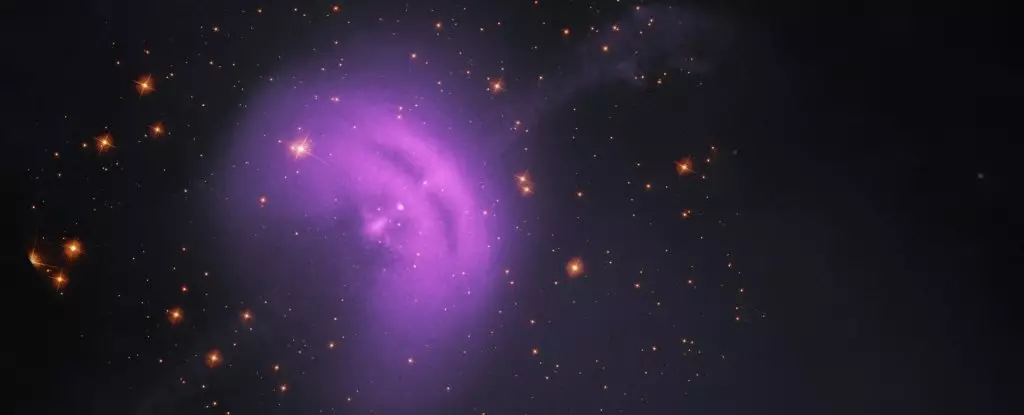Each day, Earth is showered with cosmic rays—high-energy particles from outer space that span a vast range of energy levels. While much remains uncertain about their origins, recent breakthroughs in observational astrophysics are helping scientists shed light on these elusive entities. In a significant stride forward, researchers at the High Energy Stereoscopic System (H.E.S.S.) Observatory in Namibia have made an astounding discovery: they detected cosmic ray electrons and positrons with energies reaching an extraordinary 40 teraelectronvolts (TeV). Understanding where these high-energy cosmic rays come from is critical in deciphering the universe’s cosmic landscape.
Cosmic ray electrons (CRe) and their counterparts, positrons, represent a minute fraction of the overall cosmic ray population. Research suggests that these particles are born in extreme cosmic environments, such as those around supernova remnants, black holes, and pulsars—dense star remnants known for their extraordinary gravitational fields. These energetic locations act as accelerators, propelling particles to remarkable speeds that, upon collision with our atmosphere, generate fleeting bursts of Cherenkov radiation—the universe’s version of a sonic boom.
The interaction with the Earth’s atmosphere plays a vital role in the study of CRe. Although they carry immense energy, their detection on Earth is exceptionally rare. This rarity owes to their rapid energy loss as they traverse the vastness of space, suggesting that the sources of these particles must be situated relatively nearby—within a few thousand light-years at most.
Kathrin Egberts, an astrophysicist from the University of Potsdam, explains that the findings from the H.E.S.S. Observatory allow scientists to infer that these cosmic rays likely originate from a limited number of sources in our cosmic neighborhood. This statement has far-reaching implications, as pinpointing these origins could reshape our understanding of cosmic phenomena. The novelty lies not only in the energy detected but also in the statistical inferences that can be derived from a comprehensively analyzed dataset.
The challenge at hand is the distinction between CRe and gamma rays, a category of high-energy photons. While both can create air showers that result in Cherenkov radiation, distinguishing between the two is complicated. Electrons, being charged particles, interact with the magnetic fields in unpredictable ways, unlike gamma rays that move in straight lines. This results in CRe following chaotic trajectories, complicating efforts to trace back their cosmic lineage.
One of the fascinating aspects of cosmic ray electrons is their energy loss mechanisms. Two primary processes contribute to this energy degradation: synchrotron radiation and Inverse Compton scattering. In synchrotron radiation, charged particles spiral around magnetic field lines, releasing energy across the electromagnetic spectrum—from radio waves to X-rays. Meanwhile, Inverse Compton scattering occurs when a CRe interacts with ambient low-energy photons, transferring energy and thus losing momentum.
Given these rapid energy losses, newly detected CRe must have traversed short distances before their arrival at Earth. Alongside high energies, the observed behavior presents a marked lower cut-off at 1.17 TeV, hinting at a limited number of local sources capable of producing these energetic particles. Such characteristics indicate that if multiple cosmic entities were involved, the resulting energy distribution would reveal varied contributions, yielding a smoother spectrum—a phenomenon that does not appear in this dataset.
Identifying possible sources for these high-energy electrons is now a tantalizing pursuit. Scenarios range from examining nearby supernova remnants like the Monogem Ring or assessing dying stars such as the Wolf-Rayet type star γ2 Velorum, to considering pulsars like Vela and Geminga. Moreover, the prospect of a long-dormant supernova remnant further complicates matters by possibly obscuring any traces of its prior explosive activity.
The research team at H.E.S.S. remains committed to further investigations, aiming to establish directional patterns in the arrival of cosmic ray electrons. The pursuit carries inherent challenges, but the potential to unlock deeper cosmic secrets is alluring. Understanding the origins and energy contributions of cosmic ray particles could shift paradigms in astrophysics.
The significant advancements made by the H.E.S.S. Observatory underscore the complexity and dynamism of cosmic ray research. The newly gathered data not only enhances local cosmic understanding but also sets a benchmark for future explorations in the realm of high-energy astrophysics. As the scientific community delves deeper into the nature of cosmic ray electrons, the quest for answers continues—one that might ultimately illuminate the intricate tapestry of our universe.

